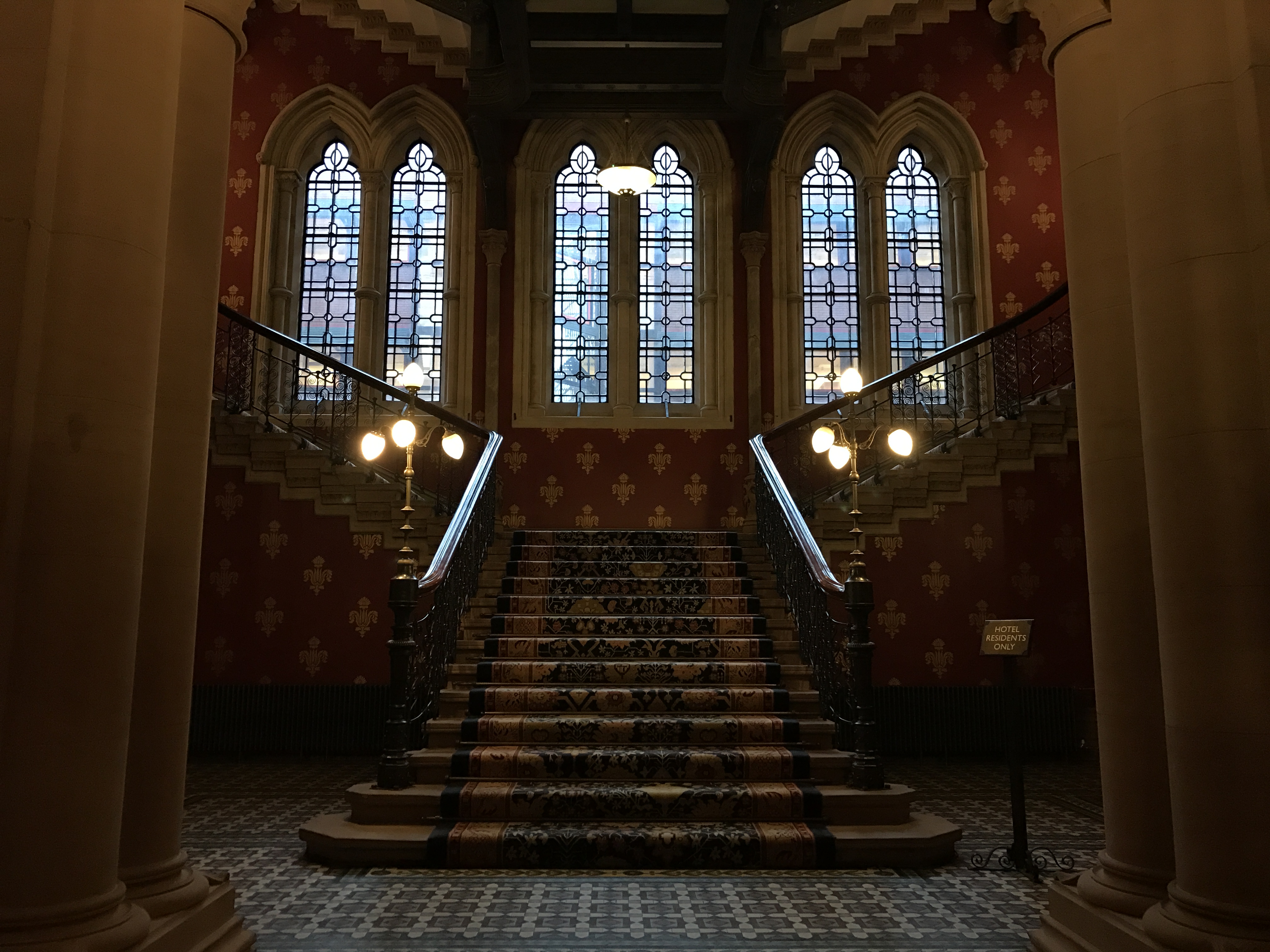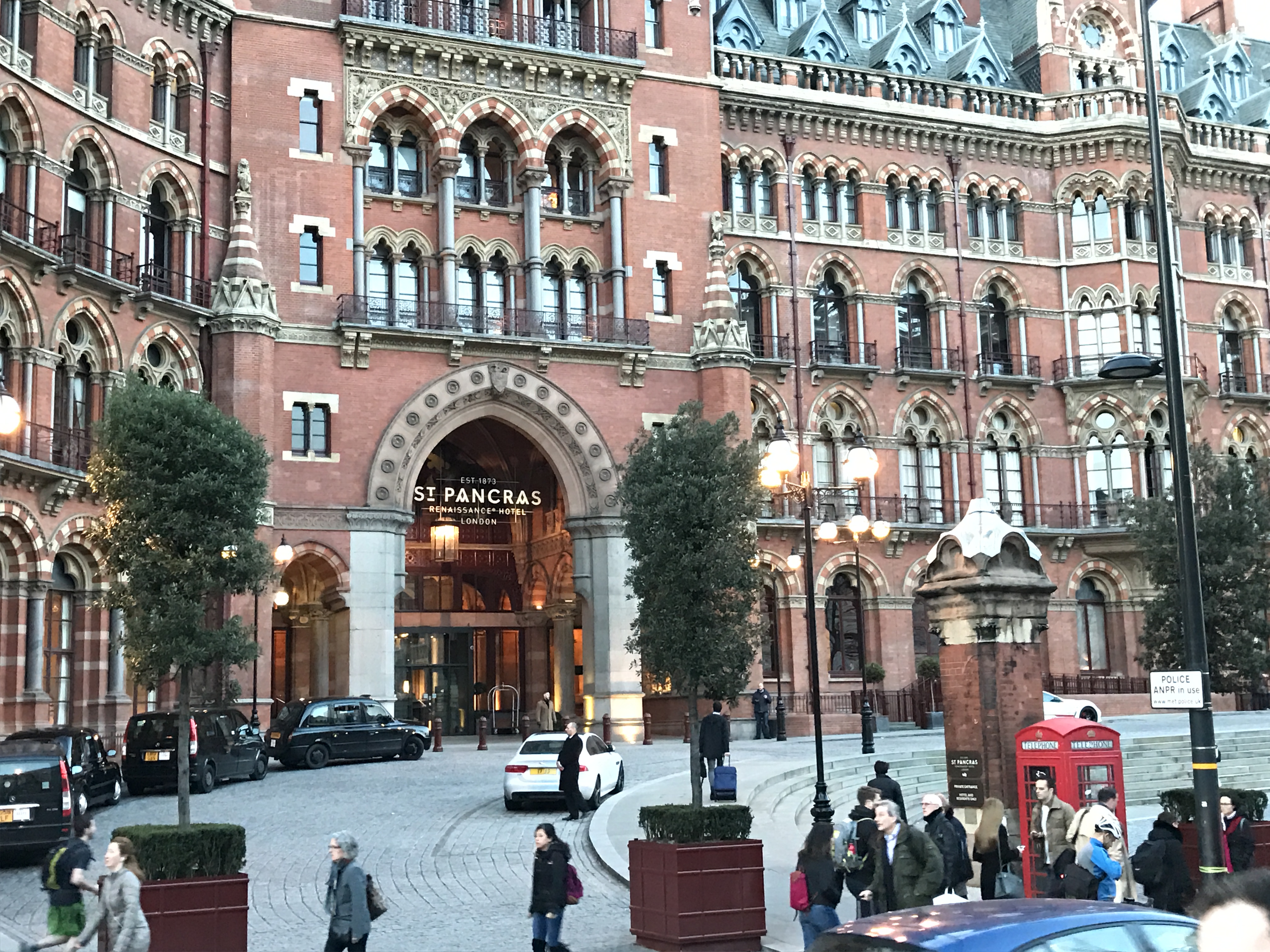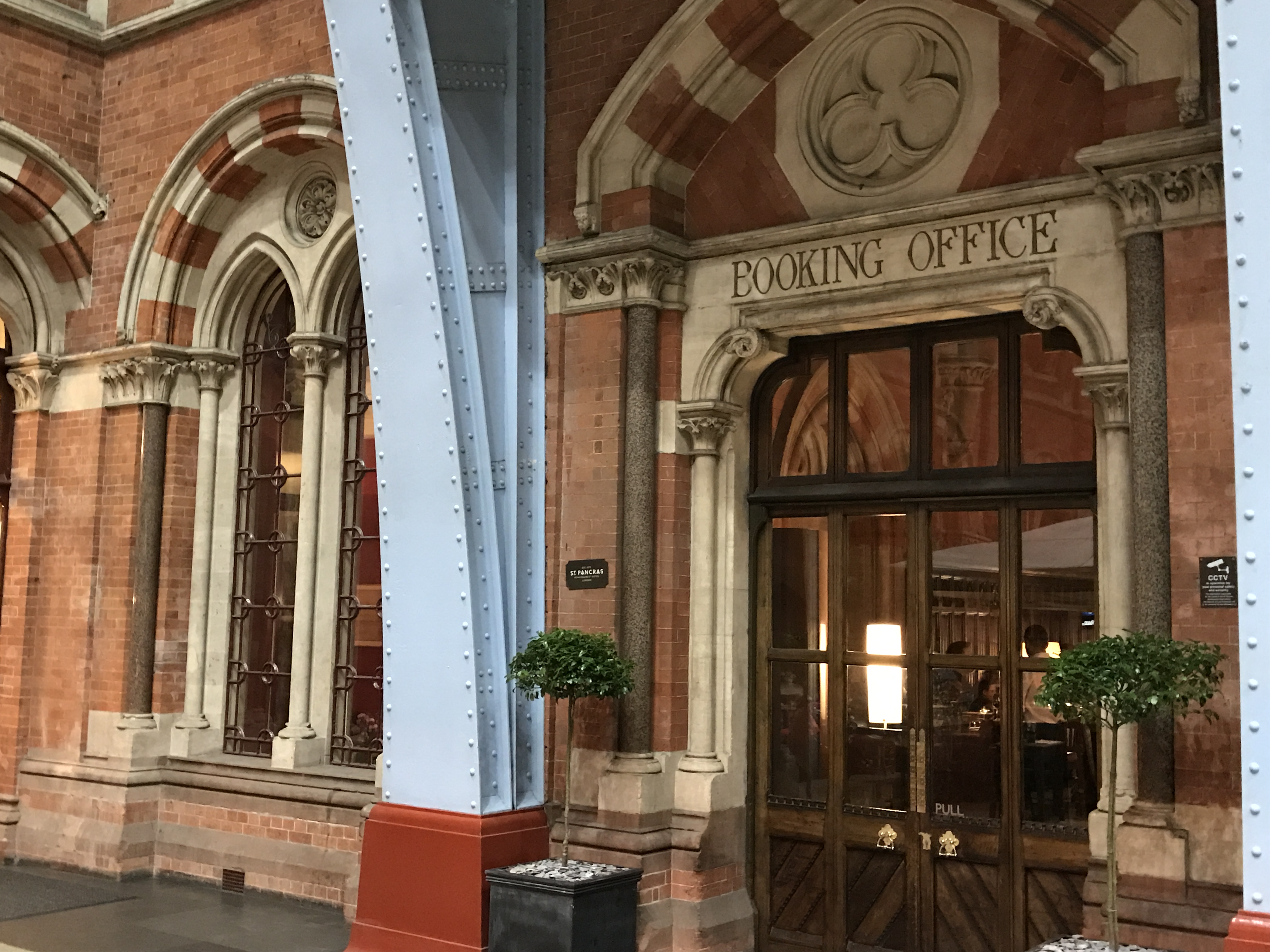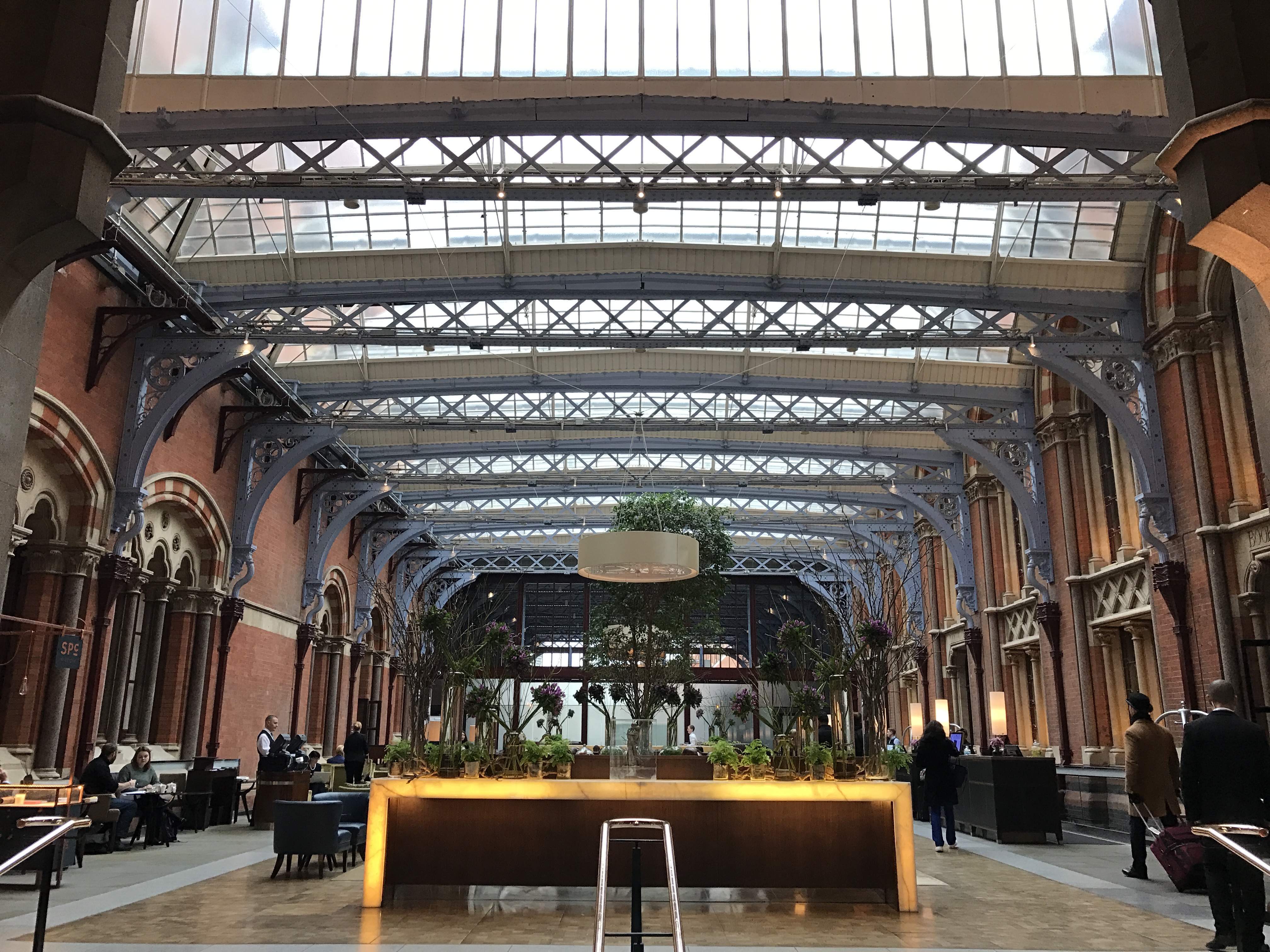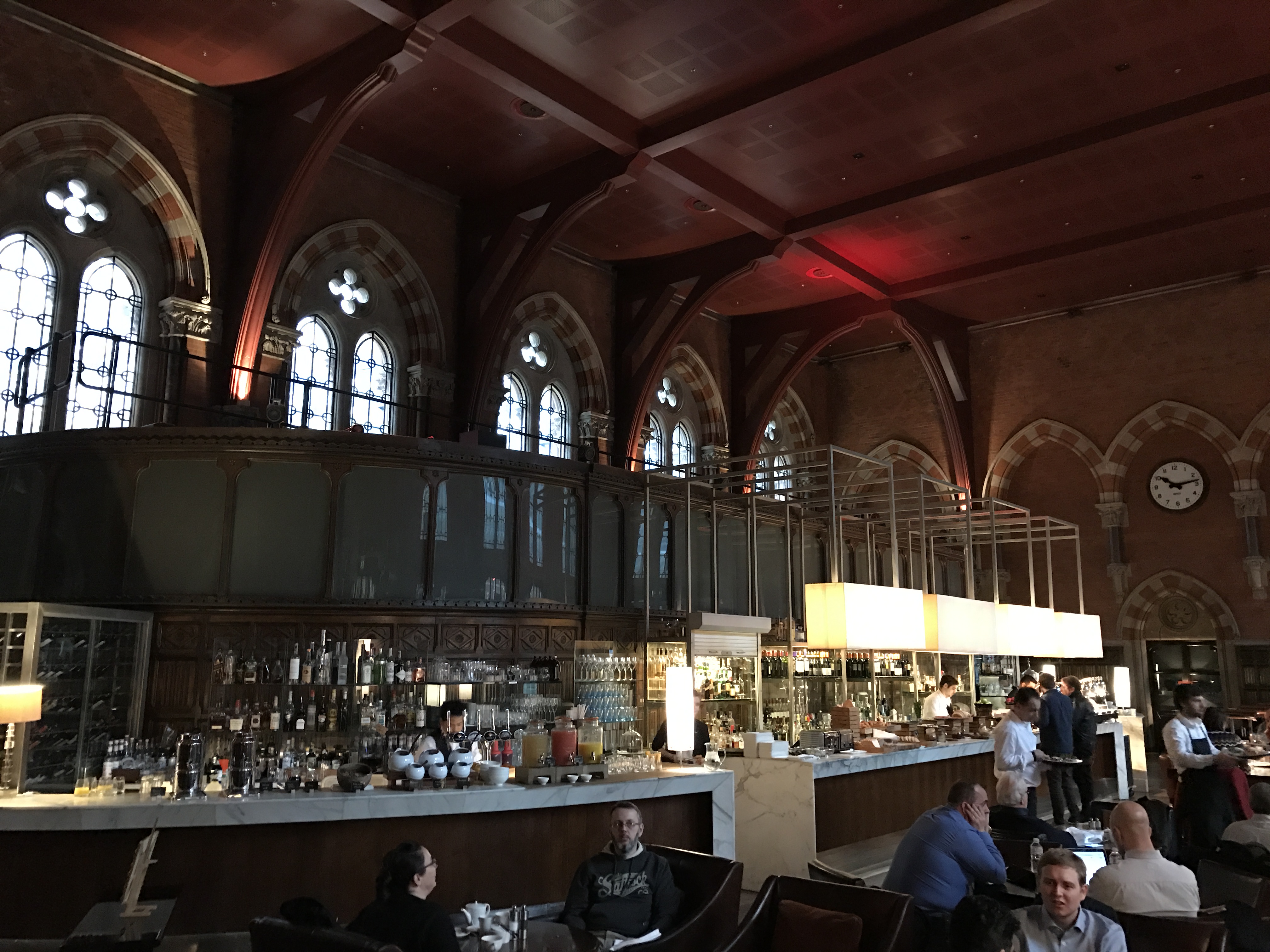Great story, great cup of tea

 PIN
St. Pancras Renaissance Hotel
PIN
St. Pancras Renaissance Hotel
A Victorian Gothic Treat
The St. Pancras Renaissance Hotel originally opened in 1873 as the Midland Grand Hotel. Since 2011, it has held the moniker of St. Pancras Renaissance after an immense effort to rebuild it. Today, the hotel represents a modern blend of old and new. It features two restaurants, a spa and guest rooms housed in the St. Pancras International Rail Station.
History
The story starts in 1865 when Midland Railway ran a competition for the design of a 150- bed hotel – an iniative driven by the belief that it needed to add lustre to the embyonic St Pancras Station. A clutch of architects submitted their schemes within a supposedly strict timeframe but much to the chagrin of the other entrants the competition was extended for a ‘bolter’ to come in as a late inclusion. Unsurprisingly the architect of choice was of one of the Directors of the Midland Railway, George Gilbert Scott who submitted a successful entry.
It has been suggested that Barry and Pugin’s designs for the Palace of Westminster (Houses of Parliament) which was under construction at this time provided the inspiration. However Scott submitted a plan far bigger, grander and far more expensive than the original specification called for giving suspicious minds further grounds for intrigue. We shall never know the truth but his audacity paid off and he was awarded the mighty contract in 1866.
It was a costly decision as Scott was instantly required to sub-contract a floor as well as having to adhere to a number of other cost cutting measures. This was due largely to the international financial melt down of the same year - known as the Panic of 1866. Construction of the St. Pancras Renaissance née Midland Grand Hotel, took place between 1868 and 1876 and was completed in various stages with the East Wing opening on 5th May 1873. The rest of the building meandered toward the grand opening through until the end of 1876.
More about the Experience
The lobby of the hotel is a sight to see with its high ceilings and open spaces. Guests and non-guests alike can partake in traditional afternoon tea or light refreshments.
Just off of the lobby is the Booking Office. The restaurant and brassiere offers a breakfast buffet in the morning and cocktails at night. The once suspended ceiling has been removed and replaced with a reconstructed version of the timber roof destroyed by German bombs in 1916. A most popular drink is the 1873, which features raspberry crisps mixed with gin and raspberry liquor.
Downstairs is the Gilbert Scott a classical restaurant named after the architect. Chef Marcus Wareing has a mix of great cuisine inspired by traditional Sunday Roasts. Visitors can take advantage of the £30 set menu that allows for a starter, main course and desert. Most noted is the Grilled Monkfish that is complimented with squid risotto and monk’s beard.
TripTide Thoughts:
We’ve stayed here a few times now and it is becoming one of our favourite London Hotels. The history and architecture of the building alone are worth staying for but the proximity to the trains, beautiful rooms, great service, the outstanding food and drinks make it our ‘go to’ hotel in Central London. Visitors with enough status, like the Queen or Brad Pitt, should check out the Chamber Room. In short the facility is stunning, the food is amazing, and the service is impeccable.
Tags
- Accommodation
- , Magnetic North
Location
St Pancras International, , Euston Rd, , Kings Cross, London , NW1 2AR (View on Google Maps)St Pancras Renaissance Hotel



 Facebook
Facebook Twitter
Twitter Tumblr
Tumblr Google+
Google+ Pinterest
Pinterest LinkedIn
LinkedIn







